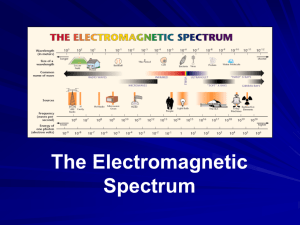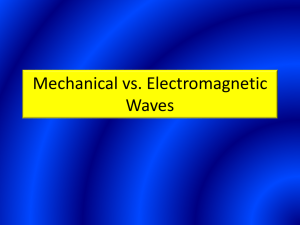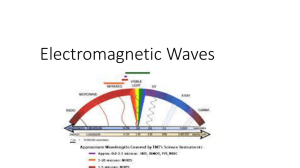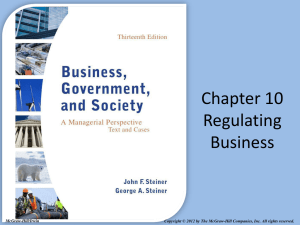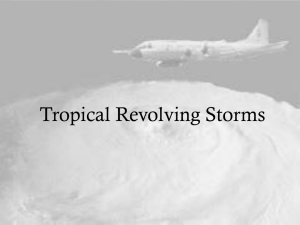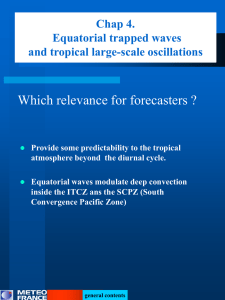African Easterly Waves
advertisement
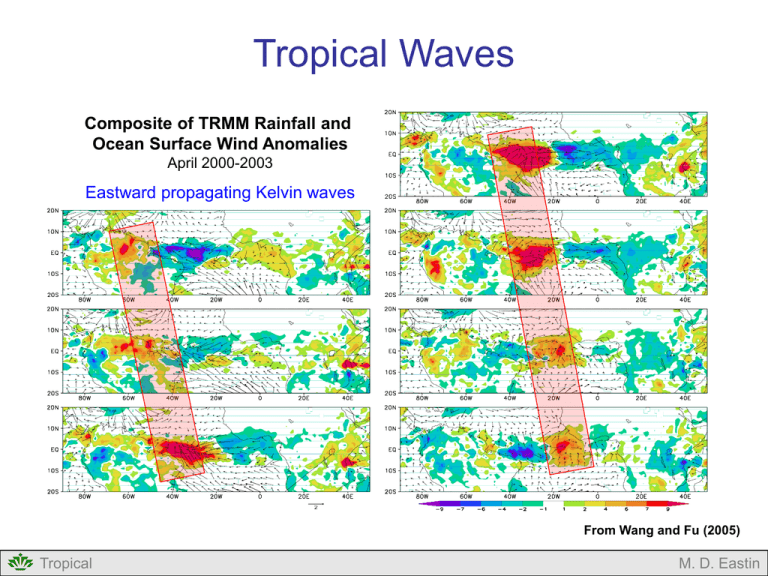
Tropical Waves Composite of TRMM Rainfall and Ocean Surface Wind Anomalies April 2000-2003 Eastward propagating Kelvin waves From Wang and Fu (2005) Tropical M. D. Eastin Outline African Easterly Waves Equatorial Waves • Inertio-Gravity Waves • Rossby Waves • Mixed Rossby-Gravity Waves • Kelvin Waves Tropical M. D. Eastin African Easterly Waves African Climatology (Aug-Sep) Sfc. Temp. (C) • Strong north-south temperature gradient in lower levels AEJ • Northerly (onshore) low-level flow of moist air off the Atlantic Ocean • Southerly low-level flow of dry air off the Sahara Desert 850 mb Winds African Easterly Jet (AEJ) AEJ • A result of thermal wind balance • Maximum of 15 m/s (easterly) at 600 mb • Oriented E-W along 15ºN (the maximum near-surface temperature gradient) 925 mb RH (%) • Extends from ~30ºE to ~25ºW • Weakens over the ocean because no strong N-S temperature gradient exists Tropical AEJ M. D. Eastin African Easterly Waves Climatology: Meridional Cross Sections at 5ºW T (C) V (m/s) J J U (m/s) W (mb/s) J Tropical J M. D. Eastin African Easterly Waves African Easterly Waves (AEWs) Development: • Barotropic / Baroclinic instabilities along the AEJ • Orographic forcing (Ethiopian Highlands) (PV Conservation → Leeside Low Pressure) • Pre-existing disturbances Basic Statistics: • Season is May-Oct with peak activity in Aug • Mean latitude of 15ºN • Wavelengths of ~2000 km • Move westward at ~8 m/s (period ~3-4 days) • Develop 20º-30ºE just downwind of the Highlands • Attain maximum amplitude near 0º-10ºW • Weaken as they move over the ocean (no AEJ) • Roughly 10% develop into TCs MeteoSat-7 Water Vapor Imagery July 3 - August 04 Tropical M. D. Eastin African Easterly Waves Mean Low-Level Structure of Individual African Easterly Waves (AEWs) AEJ Deep Convection Tropical M. D. Eastin African Easterly Waves AEWs and SAL Outbreaks • Strong AEW are often associated with a stronger than normal AEJ • Strong AEJ have greater vertical and latitudinal extents and thus stronger near-surface easterlies • This increases the likelihood of SAL outbreaks Tropical M. D. Eastin Equatorial Waves Basic Characteristics • Unique variety of waves “trapped” near the equator due to the reversal of the Coriolis forcing across the equator • Waves are symmetric across the Equator • Cooperative interaction between deep cumulus convection and large-scale convergence (i.e. the waves and convection are coupled) • Basic physics first studied by Matsuno (1966) using the shallow water (barotropic) equations on a rotating Earth in Cartesian coordinates • Identified four types of equatorial waves: • Inertio-gravity waves • Rossby waves • Mixed Rossby-gravity waves • Kelvin waves Note: Reversal of the Coriolis force across the Equator combined with geostrophic balance leads to pure westerly flow in association with a high pressure centered over the Equator • Observations of convectively-coupled equatorial waves recently studied by Wheeler and Kiladis (1999), Wheeler et al. (2000), and Straub and Kiladis (2002) Tropical M. D. Eastin Equatorial Waves Inertio-Gravity (IG) Waves • Propagate under the influence of both buoyancy and Coriolis forces Westward Propagating IG Wave Initial Time • Zonal and meridional flow are symmetric across the equator • Propagate east, west, and vertically Equator • Propagation speeds are fairly fast [higher zonal wavenumbers move faster] • Occur throughout the year, but are more frequent December through February • Are believed to play an important role in Later Time forcing the Quasi-Biennial Oscillation (QBO) Convergence Increase in Heights / Pressure Convection (waves near the surface) Divergence Decrease in Heights / Pressure Convection (waves near the tropopause) Tropical Equator From Matsuno (1966) M. D. Eastin Equatorial Waves Rossby Waves • Propagate under the influence of Coriolis forces (the N-S gradient, or β) Westward Propagating Rossby Wave Initial Time • Zonal and meridional flow are symmetric across the eqautor • Propagate westward and vertically (do not propagate eastward) Equator • Propagation speeds are fairly slow [higher zonal wavenumbers move slower] • Occur throughout the year, but are more frequent in the winter hemisphere Later Time Convergence Increase in Heights / Pressure Convection (waves near the surface) Divergence Decrease in Heights / Pressure Convection (waves near the tropopause) Tropical Equator From Wheeler et al. (2000) M. D. Eastin Equatorial Waves Mixed Rossby-Gravity (MRG) Waves • Propagate under the influence of both buoyancy and Coriolis forces Westward Propagating MRG Wave Initial Time • Meridional flow is symmetric but the zonal flow is asymmetric across the Equator • Propagate westward and vertically (do not propagate eastward) Equator • Propagation speeds are fairly slow [higher zonal wavenumbers move slower] • Occur throughout the year, but are more frequent August through November Later Time Convergence Increase in Heights / Pressure Convection (waves near the surface) Divergence Decrease in Heights / Pressure Convection (waves near the tropopause) Tropical Equator From Wheeler et al. (2000) M. D. Eastin Equatorial Waves Kelvin Waves • Propagate under the influence of buoyancy forces (like a pure gravity wave) Eastward Propagating Kelvin Wave Initial Time • No meridional flow • Zonal flow is symmetric across the Equator • Propagate eastward and vertically (do not propagate westward) • Propagation speeds are fast and increase with zonal wavenumber • Occur throughout the year, but are more frequent February through August • Are believed to play an important role in triggering El Nino events Convergence Increase in Heights / Pressure Convection (waves near the surface) Equator Later Time Equator Divergence Decrease in Heights / Pressure Convection (waves near the tropopause) Tropical From Matsuno (1966) M. D. Eastin Equatorial Waves Observations of a Convectively-Coupled Kelvin Wave • From Straub and Kiladis (2002) • Anomalous upper-level flow and temperature are quasi-symmetric across the Equator • Non-negligible meridional flow • Convection was asymmetric across the Equator (primarily north) • Propagated eastward at ~15 m/s • Zonal scale of 4000-6000 km Day -3 Day 0 • Fairly consistent with the theoretical Kelvin wave behavior predicted by Matsuno (1966) Shown are: Day +3 Shading: OLR anomalies (dark is negative → convection) Contours: 150mb temperature anomalies (solid is positive) Vectors: 150mb wind anomalies Tropical M. D. Eastin Equatorial Waves Conceptual Model of a Convectively-Coupled Kelvin Wave Low OLR Stratiform Deep Low Shallow 150 mb High Moist Cold Dry 300 mb Warm Cold 500 mb Cold Dry Moist High West Warm 700 mb 1000 mb Low East From Straub and Kiladis (2003) Tropical M. D. Eastin Tropical Waves Summary: • African Easterly Waves • African Easterly Jet (climatology and forcing) • Development • Basic Characteristics • Relation to TCs • Relation to SAL outbreaks • Equatorial Waves • Trapped along the equator (why?) • Convectively coupled • Four types • Inertio-Gravity waves • Mixed Rossby-Gravity waves • Rossby Waves • Kelvin Waves • For each wave type • Propagation forcing, direction, and speed • Annual frequency, convective coupling, impacts Tropical M. D. Eastin References Berry, G. J., and C. Thorncroft, 2005: Case study of an intense African easterly wave. Mon. Wea. Rev., 133, 752-766. Burpee, R. W., 1972: The origin and structure of easterly waves in the lower troposphere of North Africa. J. Atmos. Sci., 29, 77-90. Climate Diagnostic Center’s (CDCs) Interactive Plotting and Analysis Webage ( http://www.cdc.noaa.gov/cgi-bin/PublicData/getpage.pl ) Dunion, J. P., and C. S. Velden, 2004: The impact of the Saharan air layer on Atlantic tropical cyclone activity. Bull. Amer. Met. Soc., 75, 353-365. Kalnay, E., and Coauthors, 1996: The NCEP/NCAR 40-year Reanalysis Project. Bull Amer Met. Soc., 77, 437-471. Matsuna, T., 1966: Quasi-geostrophic motions in the equatorial area. J. Meteor. Soc. Japan, 44, 25-43. Straub, K. H., and G. H. Kiladis, 2002: Observations of a convectively coupled Kelvin wave in the eastern Pacific ITCZ. J. Atmos. Sci., 59, 30-53. Straub, K. H., and G. H. Kiladis, 2003: Extratropical forcing of convectively coupled kelvin waves during Austral Winter. J. Atmos. Sci., 60, 526-543. Thorncroft, C. D., and M. Blackburn, 1999: Maintenance of the African easterly jet. Q. J. R. Meteor. Soc., 125, 763-786. Wheeler, M., and G. N. Kiladis, 1999: Convectively-coupled equatorial waves: Analysis of clouds and temperature in the wavenumber frequency domain. J. Atmos. Sci., 56, 374-399. Wheeler, M., G. N. Kiladis, and P. J. Webster, 2000: Large-scale dynamical fields associated with convectively coupled equatorial waves. J. Atmos. Sci., 57, 613-640. Tropical M. D. Eastin

